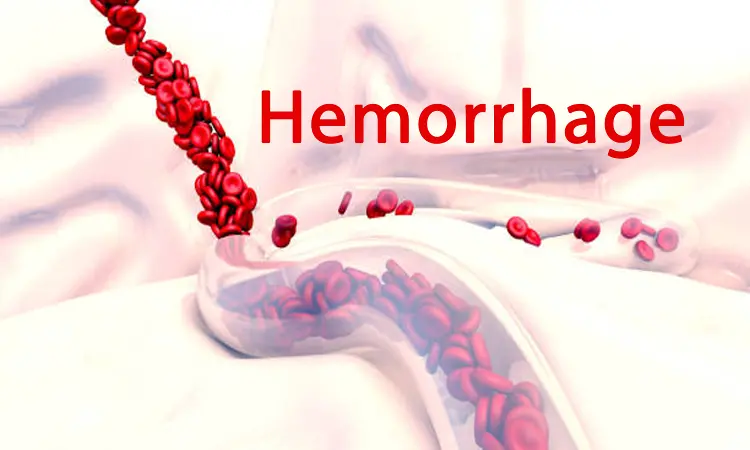- Home
- Medical news & Guidelines
- Anesthesiology
- Cardiology and CTVS
- Critical Care
- Dentistry
- Dermatology
- Diabetes and Endocrinology
- ENT
- Gastroenterology
- Medicine
- Nephrology
- Neurology
- Obstretics-Gynaecology
- Oncology
- Ophthalmology
- Orthopaedics
- Pediatrics-Neonatology
- Psychiatry
- Pulmonology
- Radiology
- Surgery
- Urology
- Laboratory Medicine
- Diet
- Nursing
- Paramedical
- Physiotherapy
- Health news
- Fact Check
- Bone Health Fact Check
- Brain Health Fact Check
- Cancer Related Fact Check
- Child Care Fact Check
- Dental and oral health fact check
- Diabetes and metabolic health fact check
- Diet and Nutrition Fact Check
- Eye and ENT Care Fact Check
- Fitness fact check
- Gut health fact check
- Heart health fact check
- Kidney health fact check
- Medical education fact check
- Men's health fact check
- Respiratory fact check
- Skin and hair care fact check
- Vaccine and Immunization fact check
- Women's health fact check
- AYUSH
- State News
- Andaman and Nicobar Islands
- Andhra Pradesh
- Arunachal Pradesh
- Assam
- Bihar
- Chandigarh
- Chattisgarh
- Dadra and Nagar Haveli
- Daman and Diu
- Delhi
- Goa
- Gujarat
- Haryana
- Himachal Pradesh
- Jammu & Kashmir
- Jharkhand
- Karnataka
- Kerala
- Ladakh
- Lakshadweep
- Madhya Pradesh
- Maharashtra
- Manipur
- Meghalaya
- Mizoram
- Nagaland
- Odisha
- Puducherry
- Punjab
- Rajasthan
- Sikkim
- Tamil Nadu
- Telangana
- Tripura
- Uttar Pradesh
- Uttrakhand
- West Bengal
- Medical Education
- Industry
Risk of first intracranial hemorrhage risk in unruptured brain AVMs lower than anticipated: JAMA

A recent study published in the Journal of the American Medical Association found that the risk of a first intracranial hemorrhage (ICH) from unruptured brain arteriovenous malformations (AVMs) is significantly lower than traditionally believed. The Multicenter Arteriovenous Malformation Research Study (MARS) from 2017 to 2023 across 9 major international cohorts, reports an annual hemorrhage rate of just 1.4%, challenging the widely cited 2–4% figure used in clinical settings for decades.
AVMs are often detected incidentally or following neurological symptoms such as seizures. While rupture can lead to life-threatening bleeding, treatment decisions have long been hampered by uncertainty over the natural risk of bleeding in unruptured cases.
The MARS project combined data from 2 population-based and 7 referral-based cohorts, making it one of the largest analyses of its kind. The study included a total of the 3,030 participants with unruptured brain AVMs (median age 38 years; 50.3% female). Nearly half of the patients (45%) presented with seizures at diagnosis, and the median AVM size was about 3.1 cm.
Detailed angiographic assessments revealed that 10% of AVMs had exclusively deep venous drainage, 11% were located in cerebellar or supratentorial deep regions, and 19% had associated arterial aneurysms that can increase bleeding risk.
During the follow-up period totaling 11,339 person-years, 159 first hemorrhages were recorded, which resulted in the revised ICH rate of 1.4 per 100 person-years (95% CI, 1.20–1.64). This research then identified several key independent risk factors that increase the risk of a first hemorrhage.
Age emerged as a significant variable, with patients over 60 years old showing a more than 2-fold higher risk (hazard ratio [HR], 2.01) when compared to those younger than 20. Middle-aged groups (40–59 years) had a moderate risk increase (HR, 1.23), while those aged 20–39 showed slightly reduced risk when compared to the youngest patients.
The presence of associated arterial aneurysms raised the bleeding risk by 66% (HR, 1.66), while AVMs located in deep or cerebellar brain regions nearly doubled the risk (HR, 1.87) relative to more superficial sites. Overall, this study highlights the importance of personalized management strategies which balances the modest annual bleeding risk against the potential complications of surgical or endovascular interventions.
Reference:
Kim, H., Nelson, J., McCulloch, C. E., Hess, C., Hetts, S. W., Flemming, K., Lanzino, G. S., 2nd, Koroknay-Pál, P., Oulasvirta, E., Laakso, A., Lawton, M. T., Mohr, J. P., Morgan, M. K., Moayeri, N., Zaroff, J. G., Stefani, M. A., Chen, X., Zhao, Y., & Al-Shahi Salman, R. (2025). Risk of future hemorrhage from unruptured brain arteriovenous malformations: The Multicenter Arteriovenous Malformation Research Study (MARS): The multicenter arteriovenous malformation research study (MARS). JAMA Neurology. https://doi.org/10.1001/jamaneurol.2025.3581
Neuroscience Masters graduate
Jacinthlyn Sylvia, a Neuroscience Master's graduate from Chennai has worked extensively in deciphering the neurobiology of cognition and motor control in aging. She also has spread-out exposure to Neurosurgery from her Bachelor’s. She is currently involved in active Neuro-Oncology research. She is an upcoming neuroscientist with a fiery passion for writing. Her news cover at Medical Dialogues feature recent discoveries and updates from the healthcare and biomedical research fields. She can be reached at editorial@medicaldialogues.in
Dr Kamal Kant Kohli-MBBS, DTCD- a chest specialist with more than 30 years of practice and a flair for writing clinical articles, Dr Kamal Kant Kohli joined Medical Dialogues as a Chief Editor of Medical News. Besides writing articles, as an editor, he proofreads and verifies all the medical content published on Medical Dialogues including those coming from journals, studies,medical conferences,guidelines etc. Email: drkohli@medicaldialogues.in. Contact no. 011-43720751


